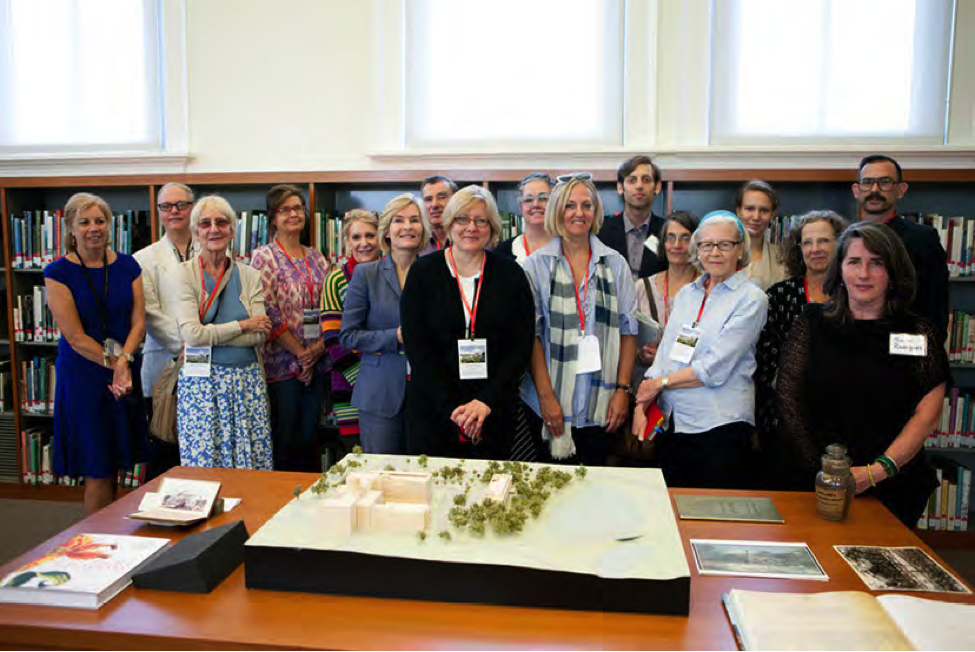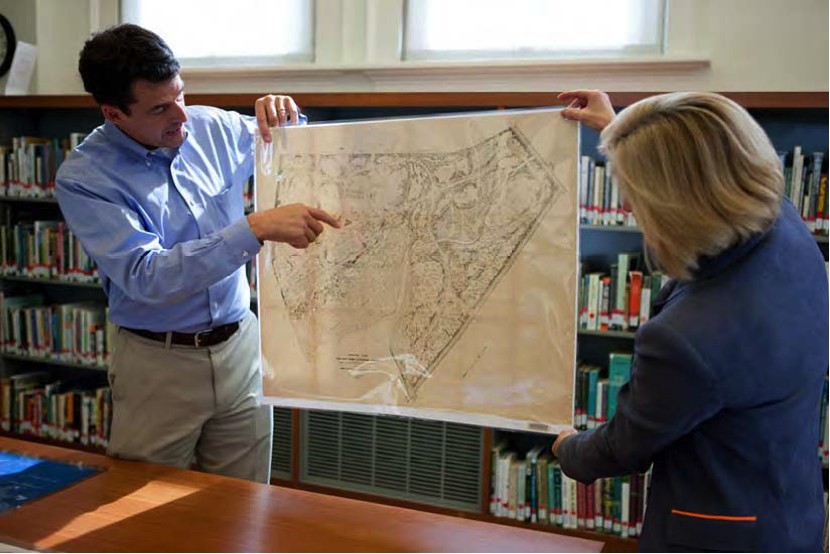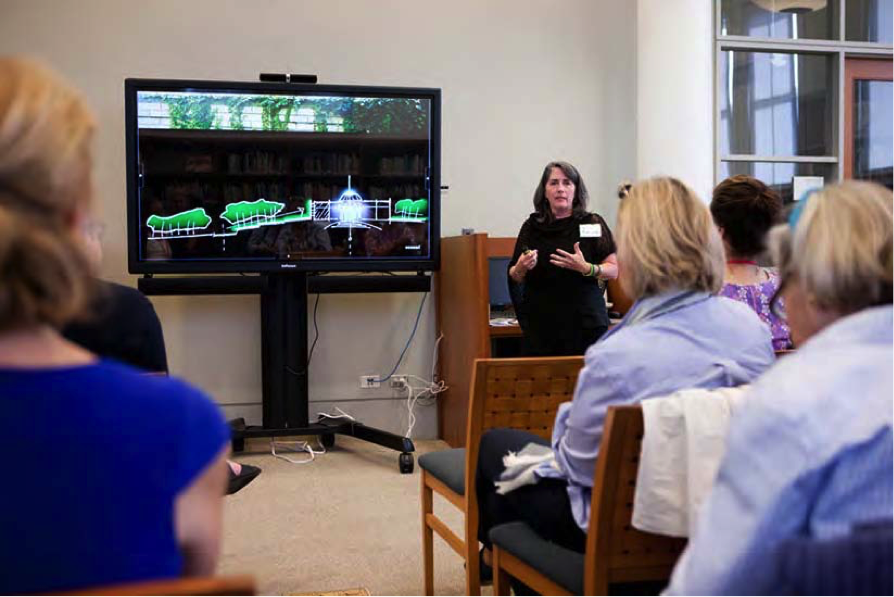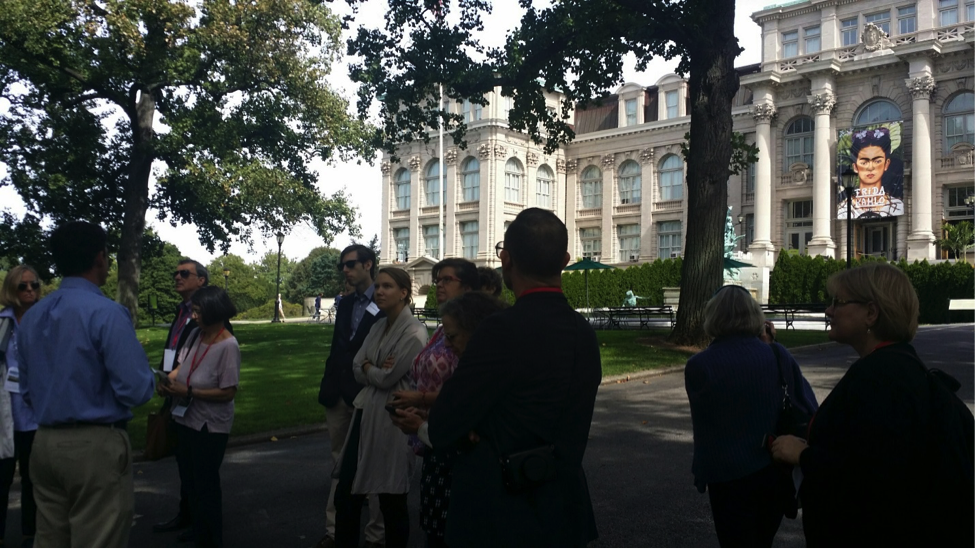An Oasis in the Metropolis
Posted in From the Library, Humanities Institute on April 14 2016, by Vanessa Sellers

On September 25, 2015, the Humanities Institute hosted a special Study Day for members of the Society of Architectural Historians. Celebrating its 75th anniversary, SAH has for many decades provided important leadership in furthering the understanding of architecture, landscapes, and urban planning, encouraging new design solutions and conserving the world’s cultural heritage. The Society aims to inspire critical thinking about the central role that architecture and landscape design play in the quality of everyday life.
SAH Study Days are designed to promote hands-on learning with a specific architectural entity or landscape. The Humanities Institute was pleased to host the September event, providing an insider tour of NYBG and its rich architectural history. Calvert Vaux created the initial design for the Garden, which was further developed by the Olmsted Brothers and completed by landscape engineers Brinley and Holbrook in the early 1920s. Many outstanding landscape and garden architects have since built upon the Garden’s tradition of excellence, most recently Oehme, van Sweden & Associates, who designed the Native Plant Garden.
Among the buildings highlighted on Study Day were the monumental Beaux Arts-style Library building (Richard W. Gibson, 1986), which houses the LuEsther T. Mertz Library; the Stone Mill, a New York landmark; and the Enid A. Haupt Conservatory (Lord & Burnham, 1899), the nation’s largest Victorian glasshouse.

The Study Day began with an introductory viewing in the Mertz Library of original maps, drawings, and watercolor renderings of the Garden led by Vanessa Sellers, coordinator of the Humanities Institute, and Stephen Sinon, Head of Special Collections, Research, and Archives at the Mertz Library. The overview highlighted the development of the site from a Bronx wilderness into a world-renowned cultural landscape, and set the stage for the rest of the day’s explorations.

Architect Susan T. Rodriguez, FAIA, partner Ennead Architects, LLP, then led a session focused on the design of the Herbarium and Pfizer Plant Research Laboratory and how these modern structures had to be carefully designed to co-exist with the classical styling of the adjacent Library building.
A walking tour of the Garden, conducted by Todd Forrest, Arthur Ross Vice President for Horticulture and Living Collections, followed the presentations, starting with a walk down the Tulip Tree Allée—today a National Historic Landmark.

The tour of the premises continued with a detailed viewing of the recently completed Native Plant Garden. Designed by Oehme, van Sweden & Associates, the Native Plant Garden distills the essence of North America’s northeastern native landscapes and ecosystems in a modern garden setting encompassing a large, rectilinear water basin. From there Todd Forrest led the group through the newly restored Thain Family Forest, a remnant of the original old-growth forest of the Eastern Seaboard. Todd explained how the forest is a living laboratory for ongoing research to measure the impact of the urban environment on the forest’s ecology. The group walked along the banks of the Bronx River on this beautiful autumn day, then enjoyed lunch on the outdoor terrace of the Goldman Stone Mill.
In the afternoon, the group visited the Peggy Rockefeller Rose Garden, a Beatrix Farrand design and model-garden that best embodies the Garden’s rich history of both horticultural and design innovation. The last stop was the Enid A. Haupt Conservatory, where architect Page Cowley, of Page Ayres Cowley Architects, LLC, discussed key elements of glasshouse construction and function. Study Day participants also had the opportunity to explore the Nancy Bryan Luce Herb Garden by Penelope Hobhouse, Ellen Shipman’s Ladies’ Border—recently re-imagined by Lynden Miller—and Piet Oudolf’s Seasonal Walk border, ablaze in autumn colors.

